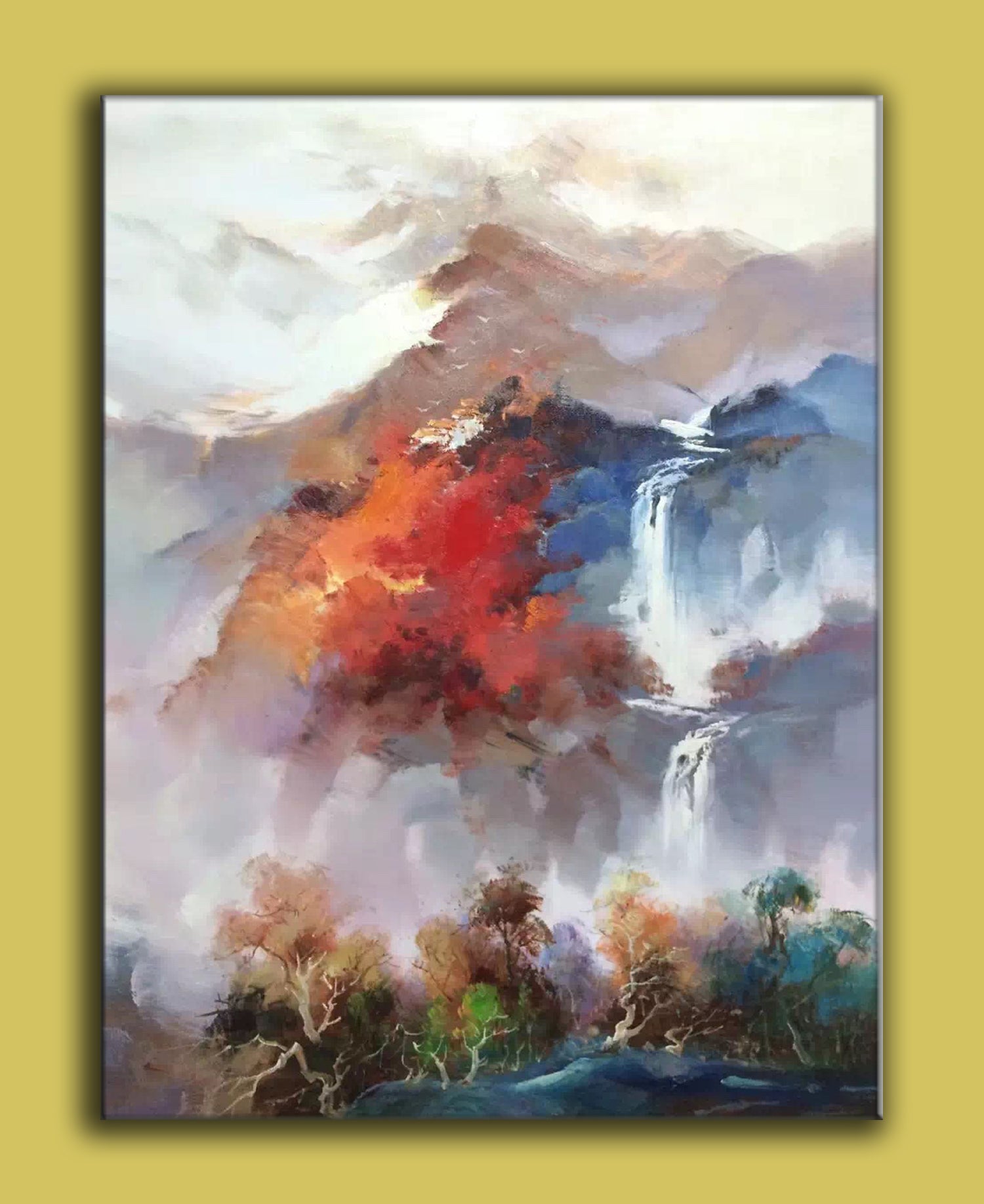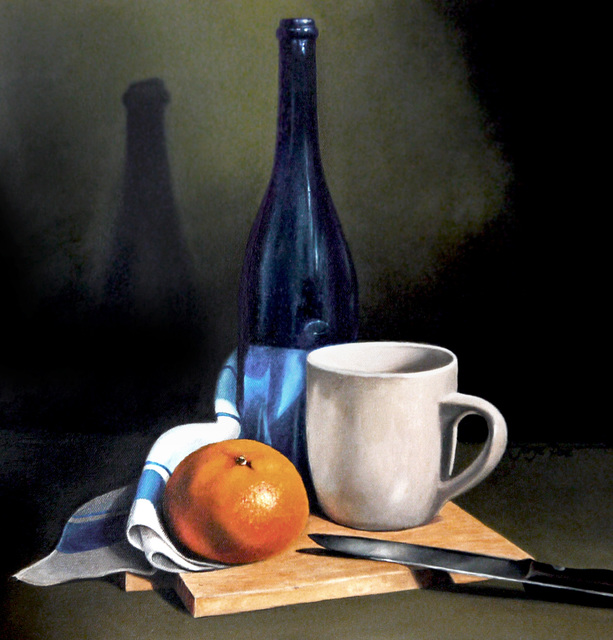The Advantages of Acquiring Oil Paintings: Why They Are a Timeless Investment
The benefits of buying oil paints extend past plain looks. These artworks lug historical importance and social value, making them beneficial enhancements to any kind of collection. Their special textures and methods add to an appealing visual experience. Moreover, recognized musicians frequently see their job value over time, providing a possible economic advantage - oil paintings for sale. As one checks out the complex reasons for buying oil paints, the deeper ramifications of such a selection become progressively evident
The Aesthetic Appeal of Oil Paints
The appeal of oil paints depends on their vibrant colors and rich appearances, which can transform any kind of room into an interesting environment. These art work possess a depth that captivates audiences, drawing them into the ins and outs of the brushstrokes and the interaction of light and darkness. The shiny coating of oil paint enhances the visual experience, giving life to scenes and subjects in a manner that other tools usually can not achieve. Additionally, the selection of styles-- from classical to contemporary-- enables a varied choice that can match any style. The psychological resonance shared with shade choices and techniques includes a layer of link between the onlooker and the artwork, making oil paints not simply decorative things, yet powerful expressions of artistic vision.
Historical Significance and Cultural Value
Oil paintings act as crucial web links to an artistic heritage, showcasing techniques and designs that have actually evolved over centuries. They encapsulate social expressions and identifications, reflecting the worths and stories of their time. By obtaining these works, people contribute to the conservation of background and the recognition of diverse social heritages.
Artistic Heritage Conservation
While lots of may overlook the significance of artistic heritage, buying oil paintings plays an important duty in maintaining historical and social narratives. These artworks act as visual documents of their time, capturing the essence of social values, customs, and historic events. By acquiring oil paintings, collection agencies add to the securing of social legacies, guaranteeing that future generations can appreciate and find out from these creative expressions. Each piece shows the one-of-a-kind story of its designer and the context in which it was made. Additionally, the ongoing gratitude and display screen of oil paintings in various settings assist to cultivate an understanding of diverse creative activities, enriching the cultural landscape. Consequently, buying oil paints is not merely a monetary choice yet an act of cultural stewardship.
Social Expression and Identity
Art functions as an effective tool for social expression and identification, reflecting the varied stories that form cultures. Oil paints, in certain, catch the essence of social heritage, highlighting sociopolitical climates and historical contexts. Each brushstroke conveys emotions and stories distinct to particular customs, allowing visitors to involve with the artist's cultural history. This connection promotes a feeling of recognizing and belonging amongst different areas. In addition, oil paints typically function as aesthetic paperwork of social development, showcasing shifts in identity with time. The investment in these artworks not only sustains artists however additionally maintains social legacies, making them considerable assets for collection agencies. Inevitably, oil paintings enhance one's recognition for the details of human experience and the rich tapestry of cultural identification.
Admiration in Value With Time

The recognition of oil paints with time is affected by different elements, including historic worth trends that mirror transforming tastes and social importance. Furthermore, the track record of the musician plays an important duty in establishing the art work's market price, usually raising as the artist gains recognition. Market need changes can better influence costs, making oil paints a potentially rewarding financial investment for collection agencies.
Historic Worth Patterns
As collection agencies look for to buy tangible possessions, the historical value fads of oil paints reveal a compelling story of admiration over time. Historically, oil paints have shown a constant upward trajectory in value, specifically for works by well-known artists. Economic cycles and market demand have actually affected these patterns, with durations of enhanced interest usually leading to substantial cost surges. Auction records often highlight the remarkable returns attained by famous pieces, additionally reinforcing the idea of oil paints as practical long-lasting financial investments. In addition, cultural motions and changes in enthusiast preferences have actually occasionally stimulated unforeseen appreciation, exposing that the art market, while rather uncertain, normally favors top quality oil paintings. As a result, comprehending these historic fads can guide financiers in making informed decisions.
Artist Track Record Impact
While the credibility of a musician plays an essential duty in the appreciation of oil paintings, it is very important to identify that this impact can differ significantly based upon several variables. Developed artists, especially those with a substantial historical or cultural influence, often tend to see their works value more swiftly. Alternatively, lesser-known or emerging artists might not experience the very same level of demand, affecting their art work's value. Additionally, the musician's ability to produce a consistent body of work and keep significance in the art world can affect lasting recognition. Collection agencies commonly look for jobs from musicians who are acknowledged by reliable galleries and establishments, which can further improve the worth of an oil paint in time, making musician track record a vital factor to consider in financial investment choices.

Market Need Variations
Exactly how do market need changes influence the admiration of oil paintings with time? The worth of oil paintings is inherently linked to market need, which can differ based on economic problems, fads, and collectors' choices. In times of economic prosperity, need typically rises, bring about enhanced rates as even more purchasers enter the market. On the other hand, throughout financial declines, need might dwindle, creating values to go stale or also decline. In addition, the popularity of particular musicians can change, impacting their work's desirability. Inevitably, understanding market demand is necessary for financiers, as well-managed collections can value significantly gradually, reflecting both the skill of the musician and the wider market characteristics. This interplay emphasizes the importance of critical buying in oil painting investments.
One-of-a-kind Structures and Methods
Oil paints mesmerize audiences with their distinctive appearances and methods, showcasing the musician's mastery over the tool. The thick application of paint, referred to as impasto, produces a three-dimensional effect, inviting touch and boosting aesthetic depth. Musicians often use various brush strokes, layering, and glazing approaches to attain luminescent colors and elaborate information. This convenience permits for abundant contrasts and refined changes, making each artwork distinctively expressive. Additionally, the sluggish drying time of oil paint enables artists to mix shades effortlessly, causing dynamic hues and smooth slopes. These techniques contribute to the painting's total character, making it an engaging centerpiece. Each oil paint functions as an indicator of the creativity and ability integral in conventional imaginative practices.
Convenience in Home Design
The distinct appearances and methods of oil paints not only showcase creative ability yet also boost their flexibility in home decoration. These art work can flawlessly complement different interior styles, from modern minimal to traditional sophistication. Oil paints work as prime focus, drawing interest and stimulating discussion among visitors. Their abundant colors and deepness can integrate with different color schemes, making them adaptable to transforming design patterns. In addition, the psychological vibration of oil paintings can produce setting, whether it be warmth in a comfy living-room or vibrancy in an imaginative work area. By including oil paintings, home owners raise their spaces, transforming them into attentively curated environments that show personal taste and creative admiration. Inevitably, oil paints are a long-lasting choice for boosting home appearances.
Link to Prominent Musicians
While numerous art kinds can stimulate appreciation, purchasing oil paintings commonly develops an one-of-a-kind connection to prominent musicians throughout background. Owning an oil painting permits enthusiasts to involve with the innovative visions of masters like Van Gogh, Monet, and Rembrandt. Each brushstroke personifies the artist's objectives, emotions, and techniques, supplying understanding right into their world. This connection transcends time, as each item carries a story that shows the cultural and historical context of its production. Collection agencies not just obtain a work of art but also a piece of the artist's legacy. As art enthusiasts check out the stories behind these paints, they get a much deeper admiration for the workmanship and artistic motions that shaped their advancement, boosting the value of their investment.
Emotional and emotional Benefits of Art
Art regularly functions as an effective catalyst for emotional and emotional health. The presence of oil paints in a living space can stimulate a variety of feelings, from oil paintings for sale serenity to motivation. Their vibrant colors and intricate information use visitors an escape, permitting representation and reflection. Studies recommend that involving with art can reduce anxiety and anxiety, promoting a feeling of tranquility. Additionally, owning original art work can develop an individual link, enhancing feelings of satisfaction and joy. This emotional bond often results in a much deeper gratitude of one's surroundings, changing a home right into a home. Inevitably, the emotional advantages of art expand past aesthetics, adding to general mental health and wellness and enriching life experiences.

Frequently Asked Inquiries
How Do I Select the Right Oil Paint for My Room?
Selecting the right oil paint entails thinking about the area's color pattern, dimension, and general aesthetic. One should review personal taste, the painting's psychological influence, and how well it enhances existing design prior to deciding.

What Elements Influence the Value of an Oil Paint?
The worth of an oil painting is affected by aspects such as the artist's credibility, provenance, historical value, condition, market, and rarity need. Each element adds to total worth and charm among collectors.
Exactly How Can I Take Care Of and Preserve My Oil Paint?
To care for and preserve an oil painting, one must regularly dirt it with a soft towel, prevent straight sunlight exposure, control moisture levels, and consider expert cleaning to maintain its vibrancy and stability.
Are There Details Musicians Recognized for Their Oil Paints?
Numerous artists are renowned for their oil paintings - oil paintings for sale. Remarkable numbers include Vincent van Gogh, Claude Monet, and Rembrandt, each celebrated for their special methods and payments to the art world via dynamic, distinctive oil mediums
Where Can I Acquisition Authentic Oil Paintings?
Authentic oil paintings can be purchased from reliable galleries, art fairs, and online platforms focusing on great art. Enthusiasts must verify the authenticity and provenance prior to making a purchase to ensure a beneficial investment. Historically, oil paints have actually demonstrated a constant higher trajectory in value, especially for jobs by well established artists. While the reputation of an artist plays a crucial role in the recognition of oil paints, it is vital to acknowledge that this influence can vary substantially based on several variables. Oil paints astound visitors with their distinctive structures and techniques, showcasing the musician's proficiency over the medium. While many art forms can evoke affection, acquiring oil paints typically develops an one-of-a-kind link to popular artists throughout background. The value of an oil paint is affected by elements such as the musician's reputation, provenance, historic importance, market, rarity, and problem demand.